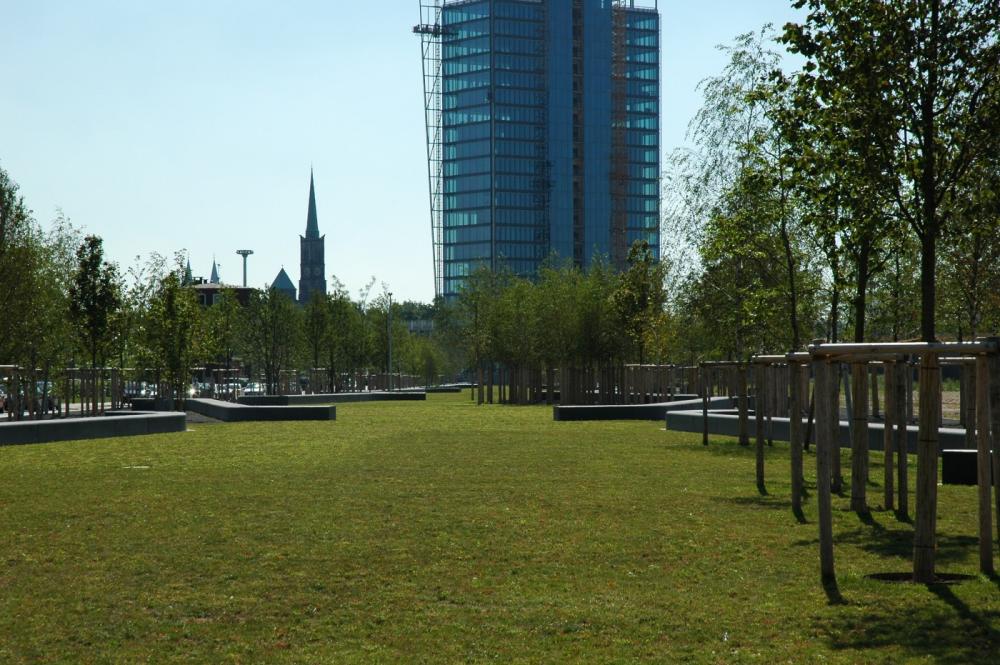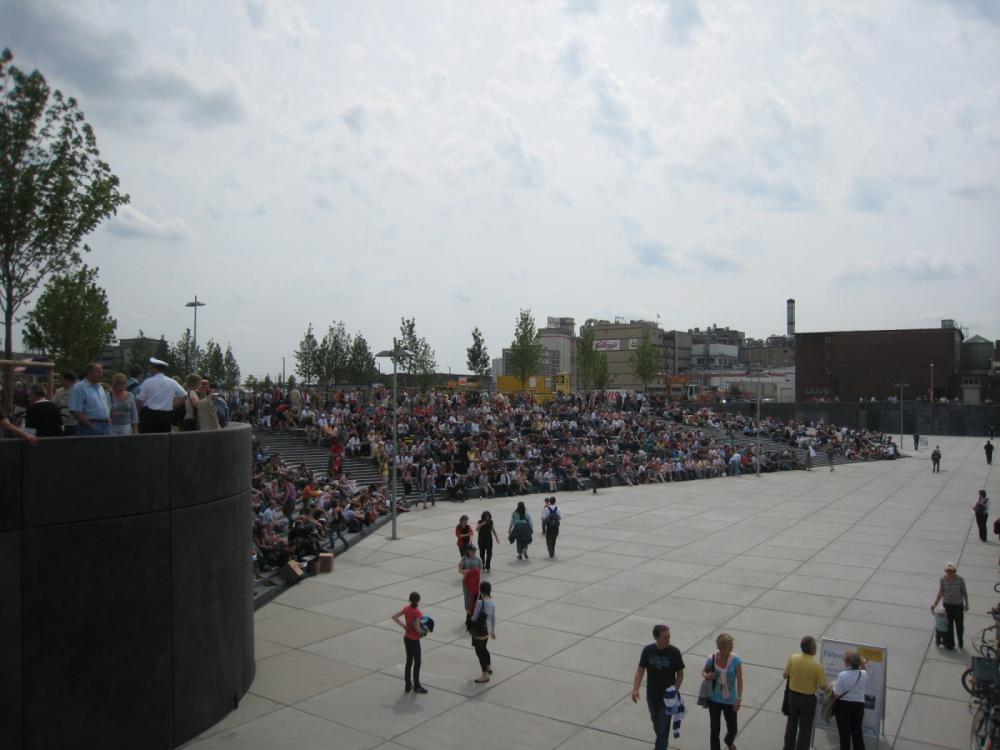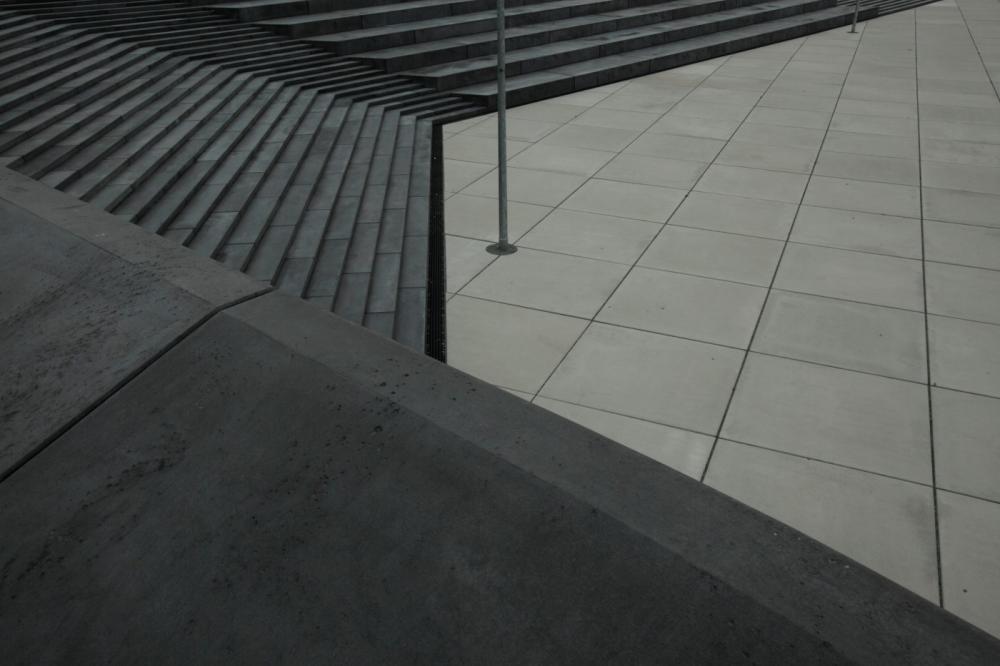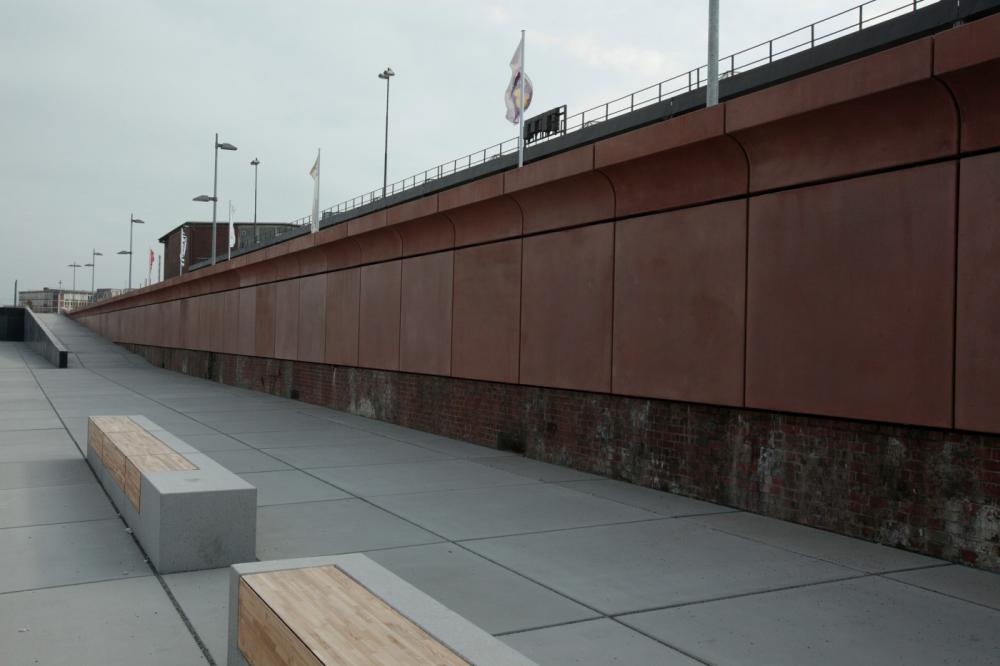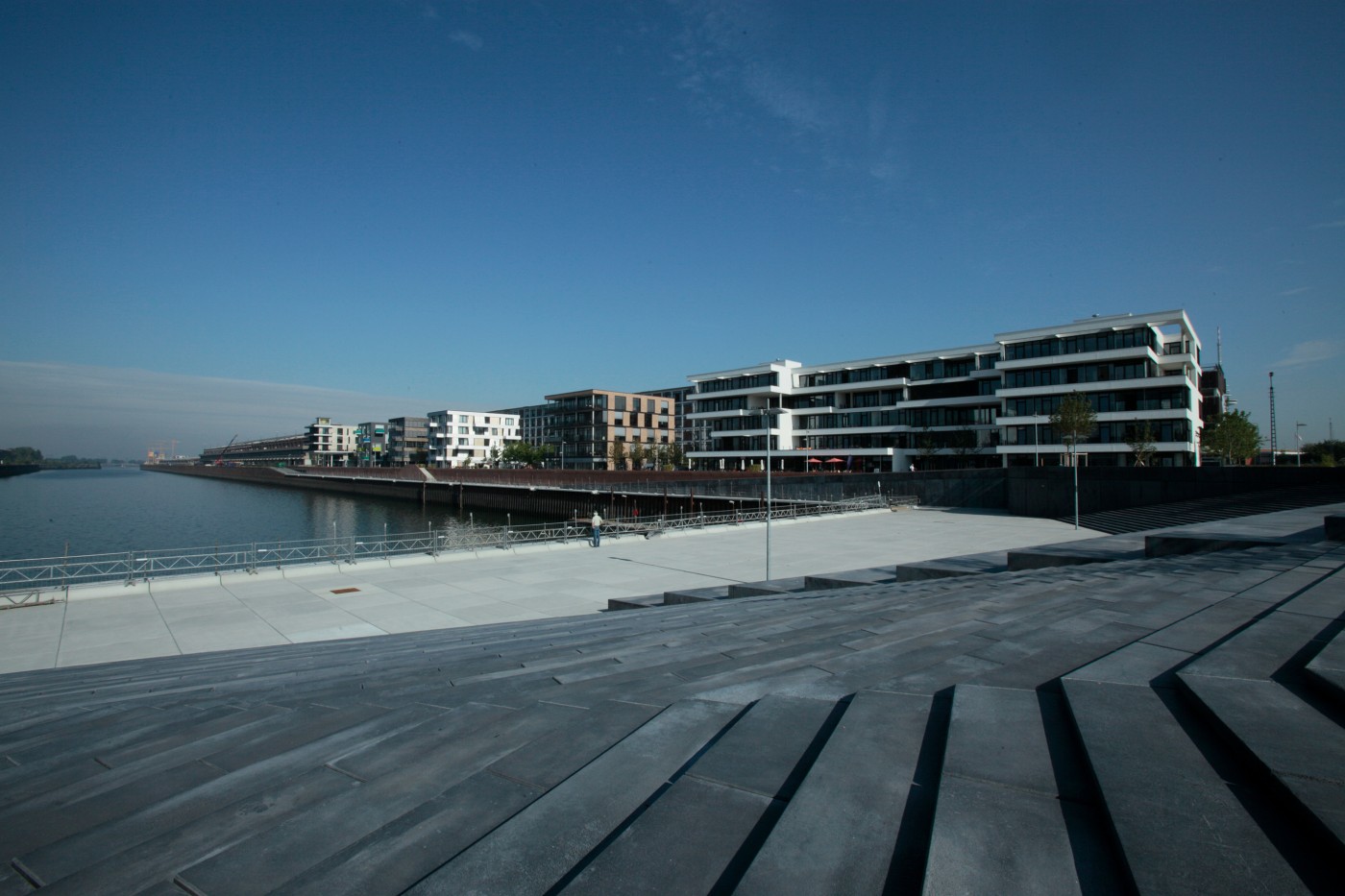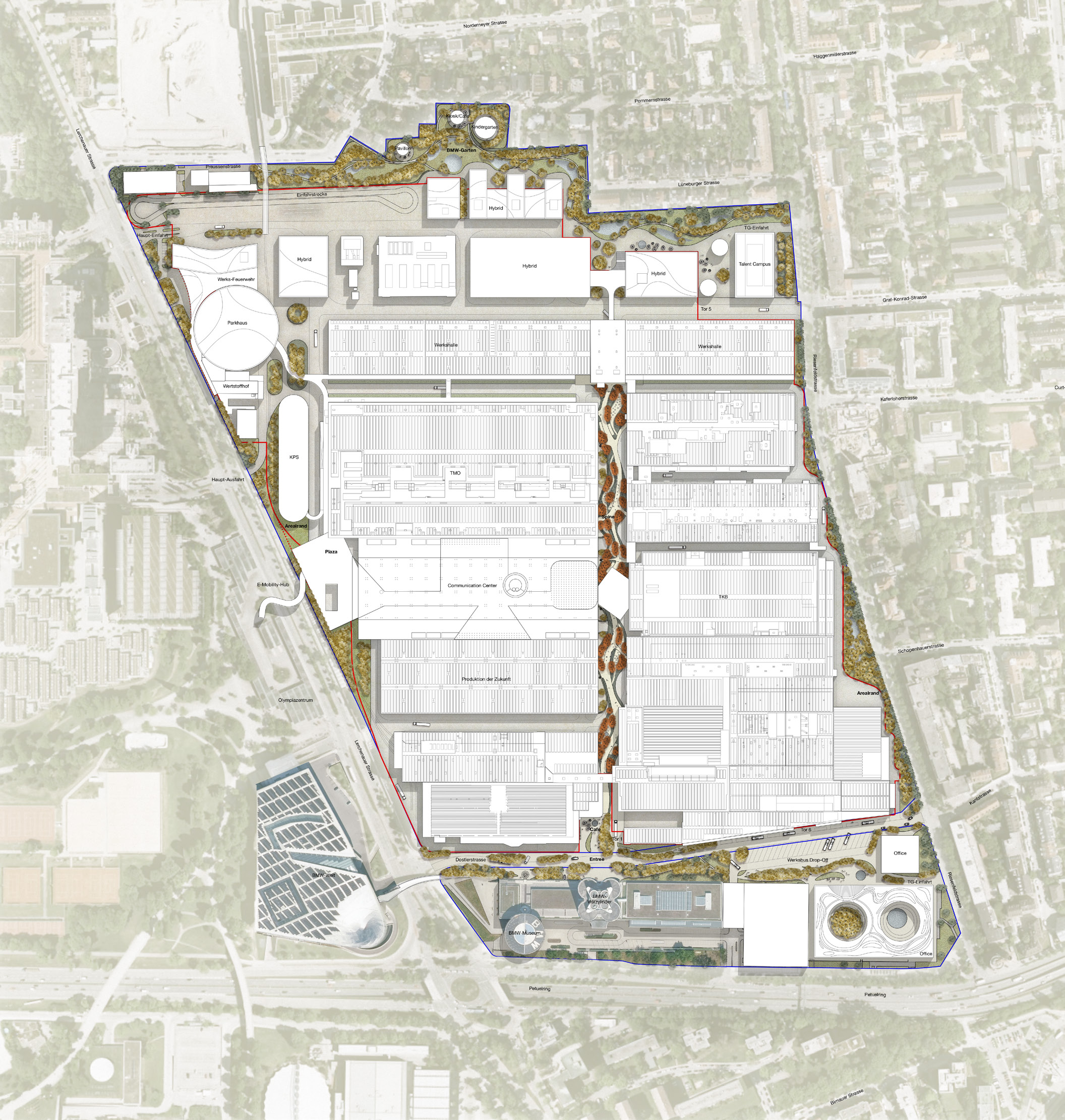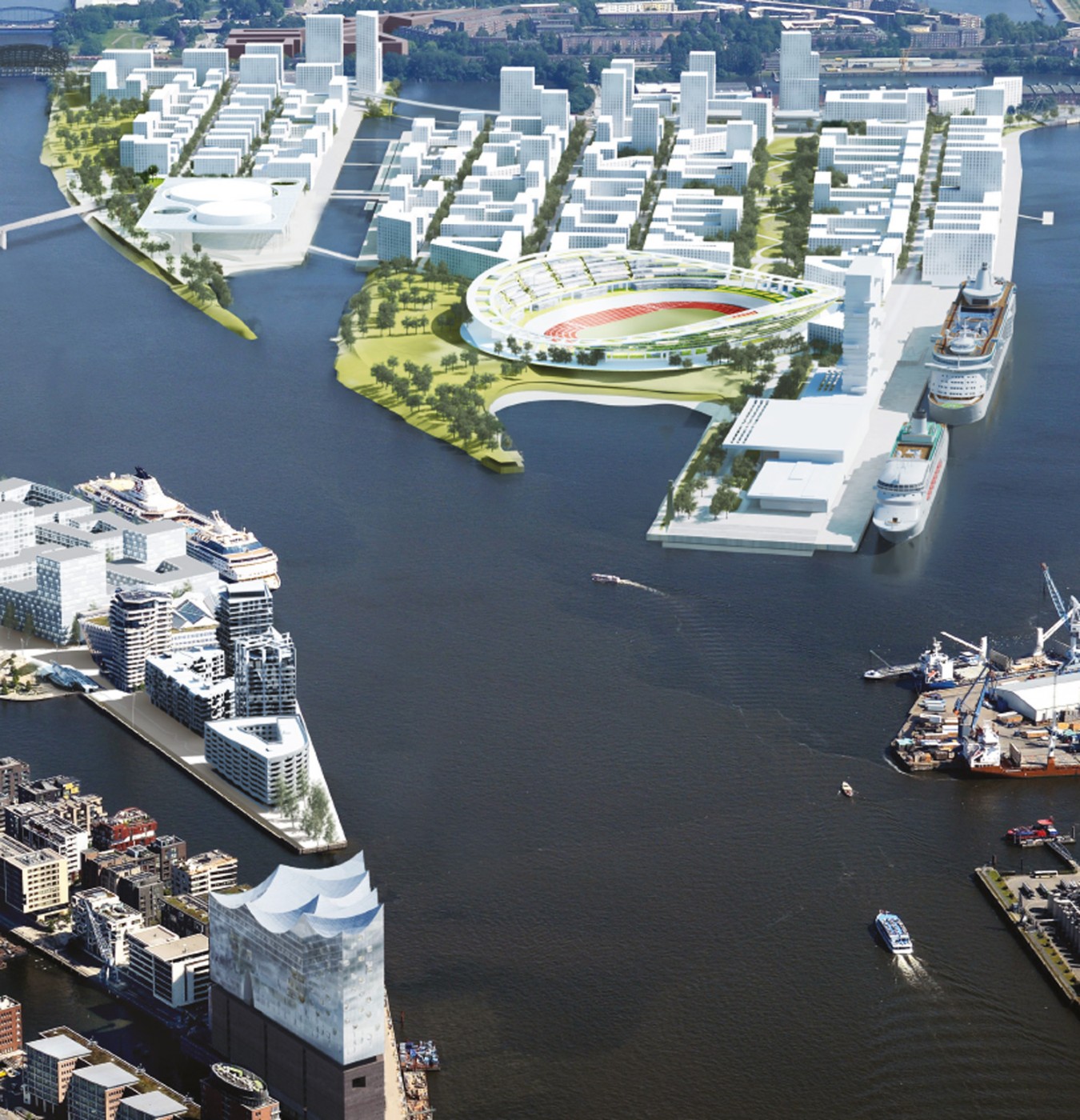
Als ehemaliger Zollgrenzbereich waren die Freianlagen der Hafenvorstadt und des Europahafens Bremen lange Zeit Wirtschaftszentrum und zugleich Terra Incognita inmitten der Hansestadt. Doch mit der Entwicklung der Containerschiffahrt verloren die Hafenanlagen aus dem 19. Jahrhundert zunehmend ihre Bedeutung.
Die heute stillgelegten Industrieanlagen und verwaisten Kajen nahe der Altstadt werden nun wieder Teil des öffentliche Lebens: Neben Raum für Wohnen, Gewerbe und Dienstleistung entstehen um den Hafen grosszügige städtische Freiräume, die den alten Hafen an die Bremer Innenstadt anbinden. Das Gestaltungskonzept gründet auf den Freiraumtypologien Promenade, Platz und Park, die im Projekt deutlich ausgeformt werden, um eine Abfolge städtischer Räume von jeweils eigener Idenititä zu schaffen. Gleichzeitig werden über Sichtachsen und Materialisierung Bezüge zwischen den Einzelteilen geschaffen. Während die zweistufigen Promenaden entlang des Hafenbeckens Raum für Bewegung und zwanglose Begegnung bieten, wird der Platz als offen gestalteter Raum zur Bühne der Inszenierung des öffentlichen Lebens vor dem Hintergund des Hafenbeckens. Der Park als verbindendes Element zwischen Hafen und Innenstadt ist im Sinne eines Volksparkes gestaltet. Durch sich rythmisch aufweitende Hain- und Wiesenbereiche mäandriert ein Weg aus einem dunklem, wassergebundenen Belag. Geschwungene Sitzmauern trennen Wiesen- und Wegeflächen, während sich die Bäume über diese Trennung hinwegsetzen: In den Belag eingestreute Birken kontrastieren die dunkle Belagsfläche, auffällig blühende Bäume und solche mit attraktiver Herbstfärbung beschatten die Wiesenflächen.
Materialisierung und Detailgestaltung lehnen sich in allen drei Teilen an den bestehenden Hafenelementen an und schaffen Verbindung zwischen der Geschichte und der Zukunft dieses zentralen Ortes – von der Terra Incognita zur Terra Recognita.


